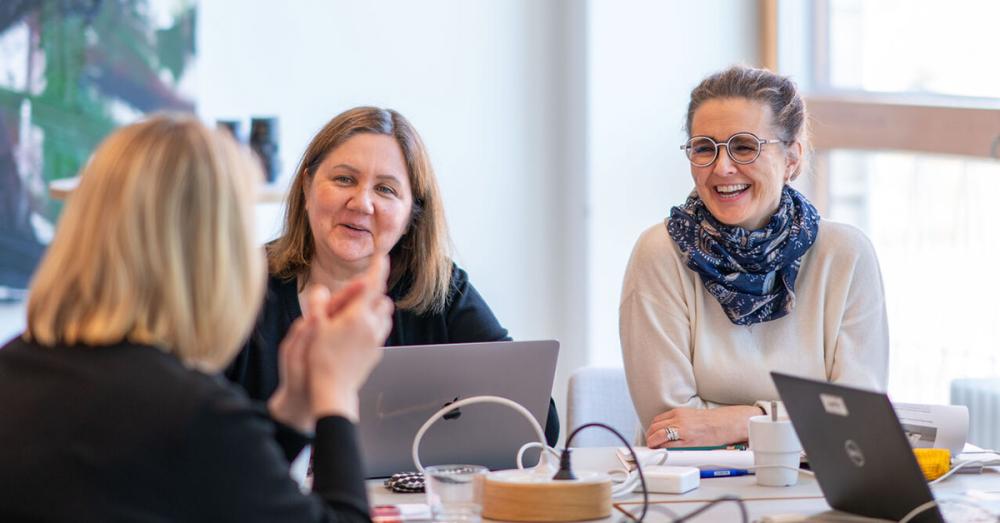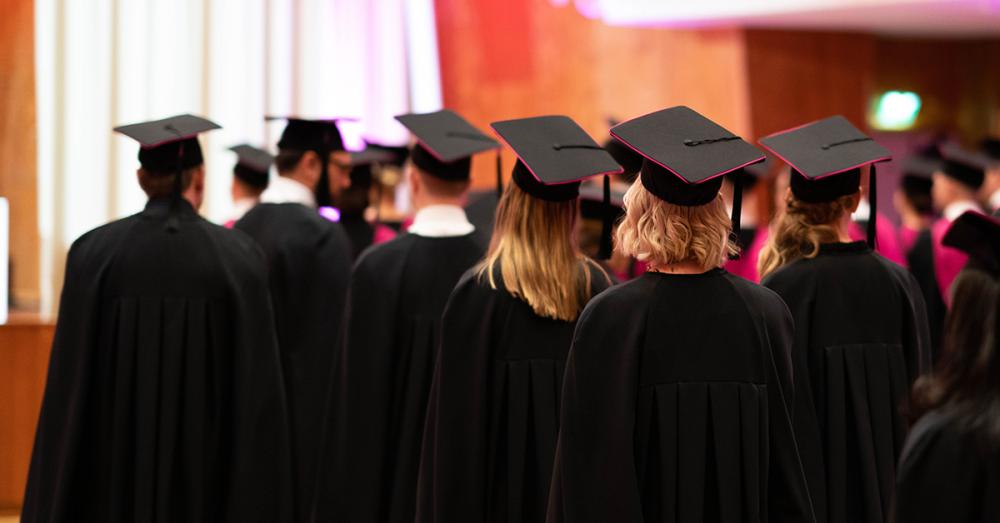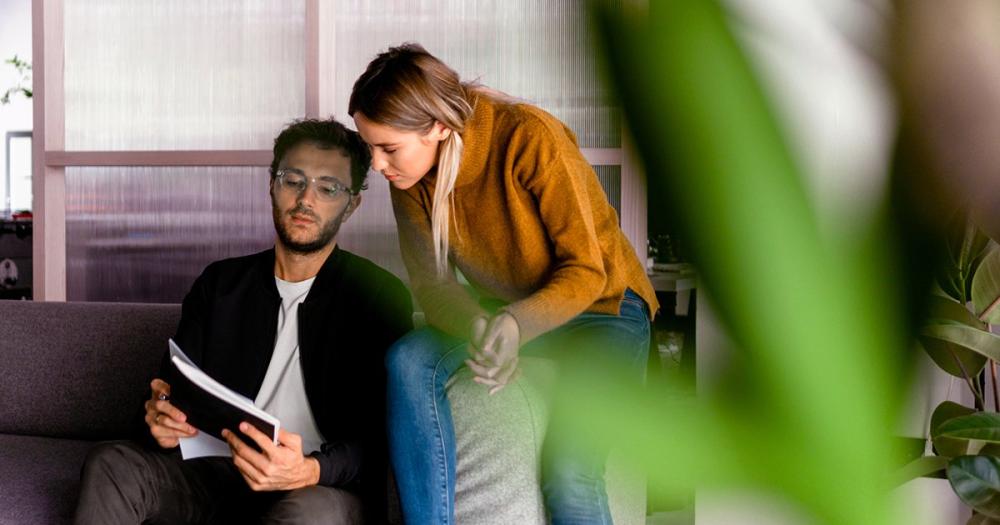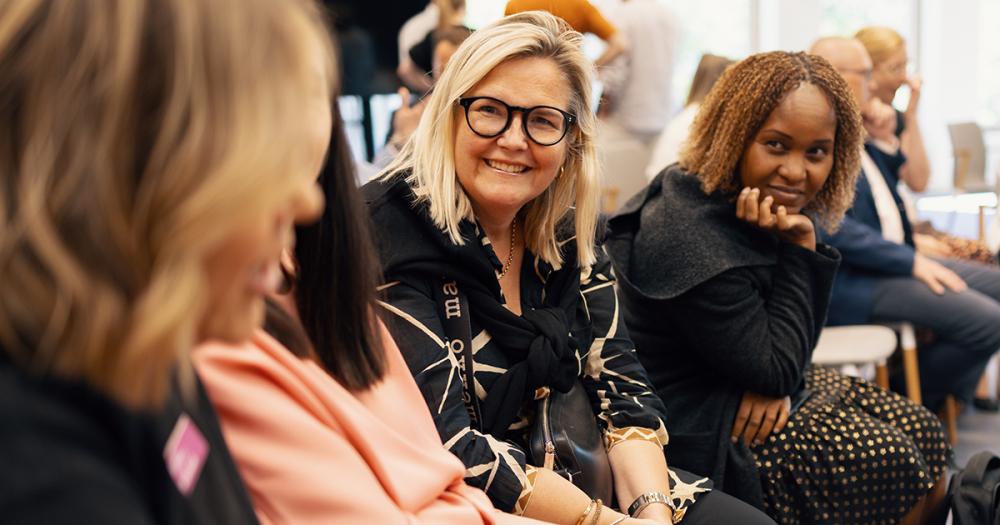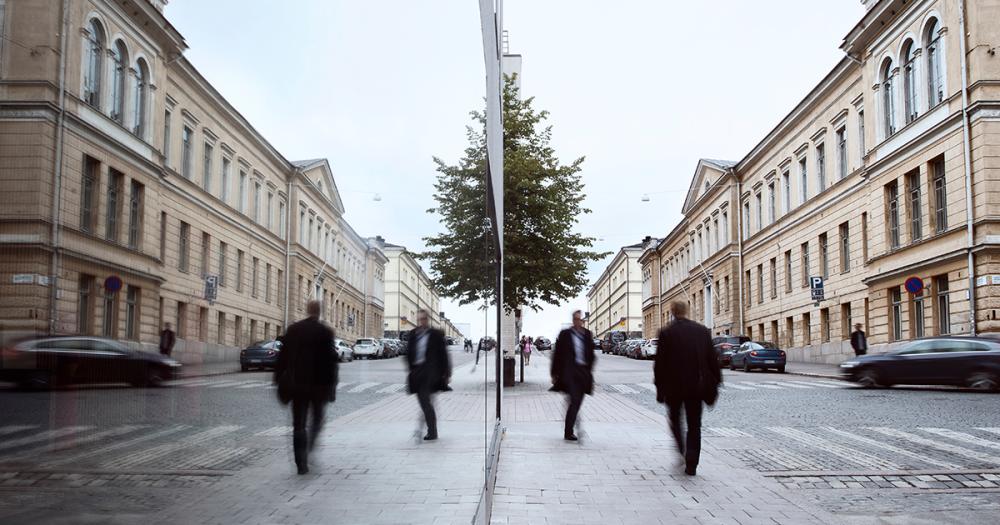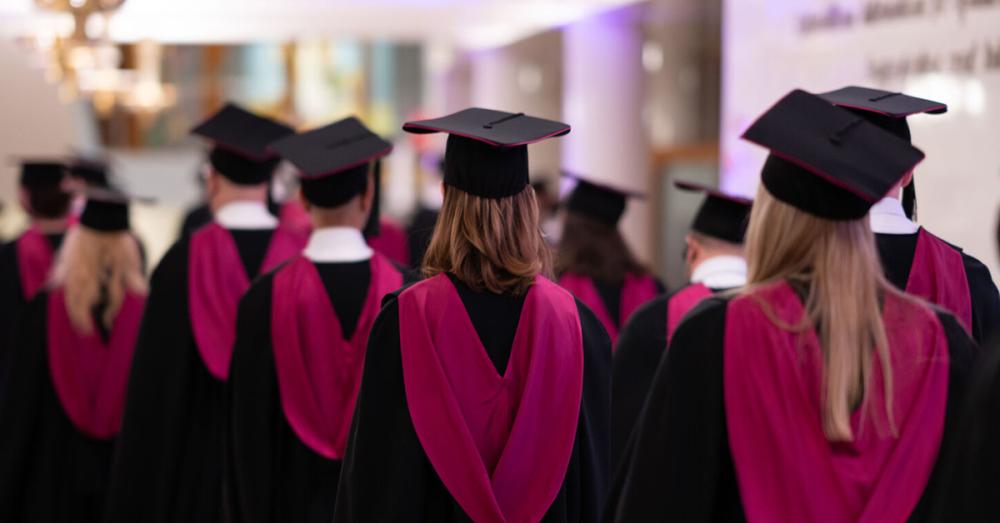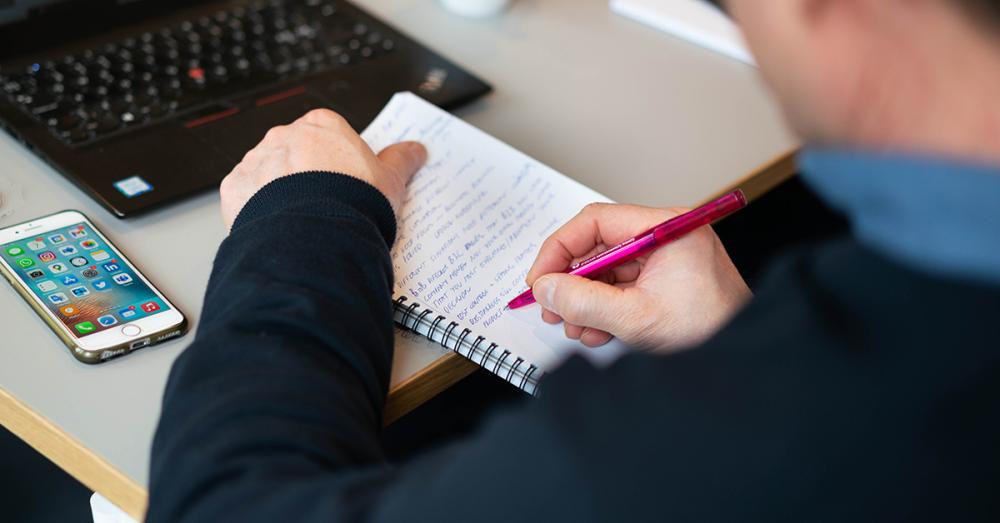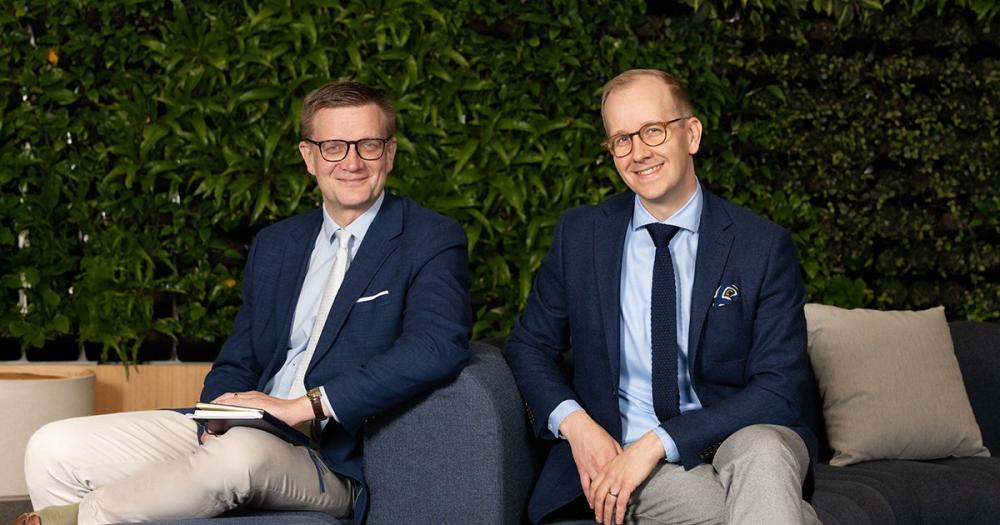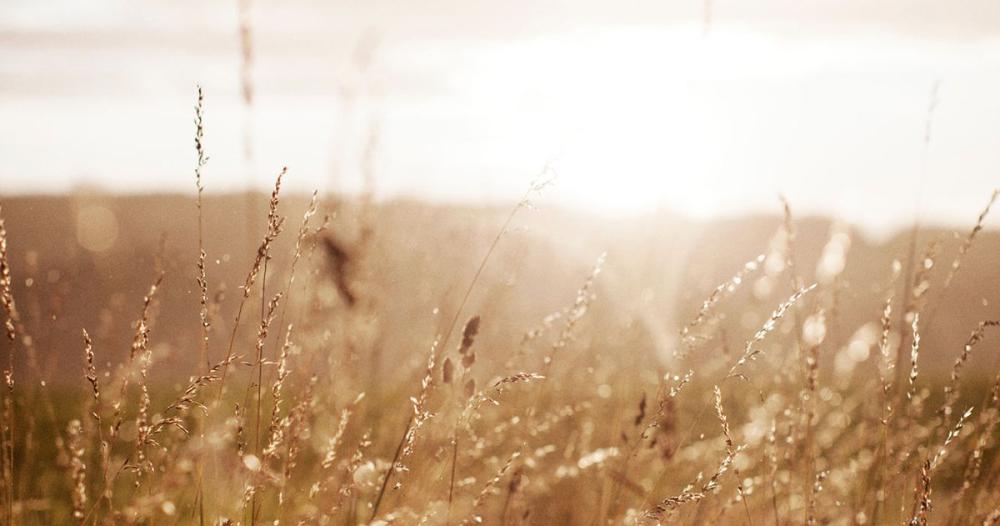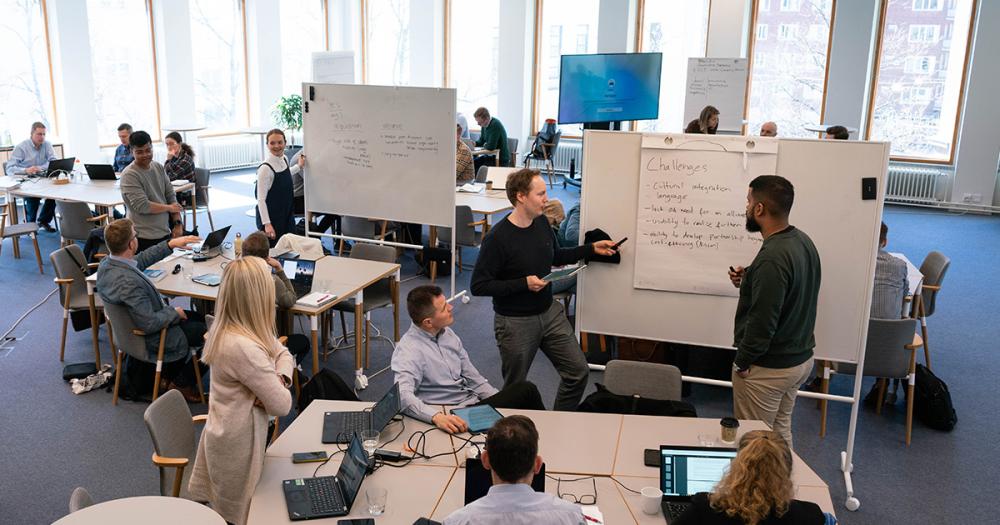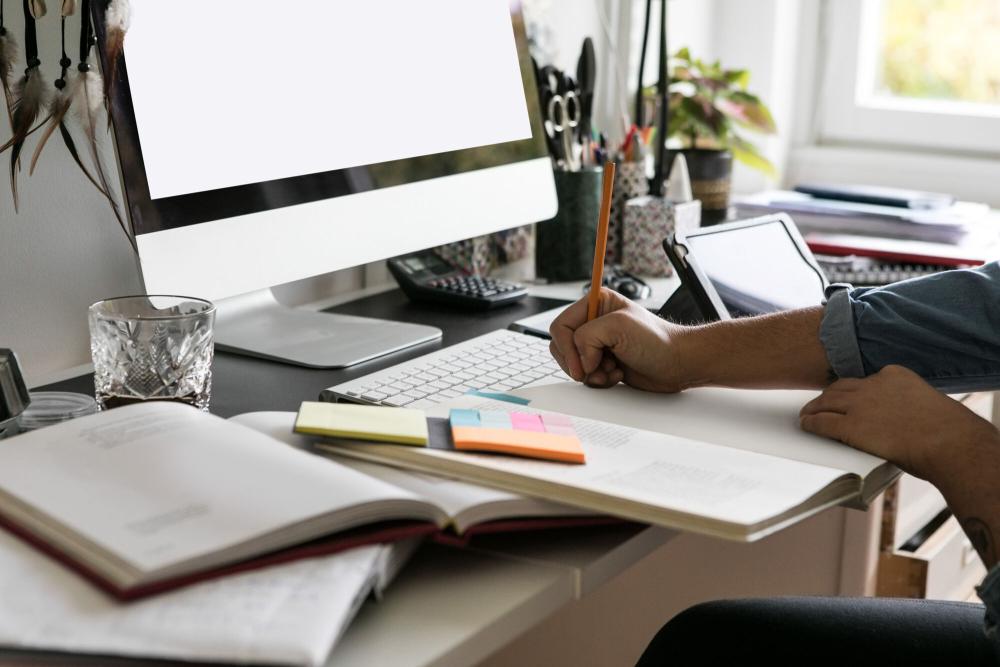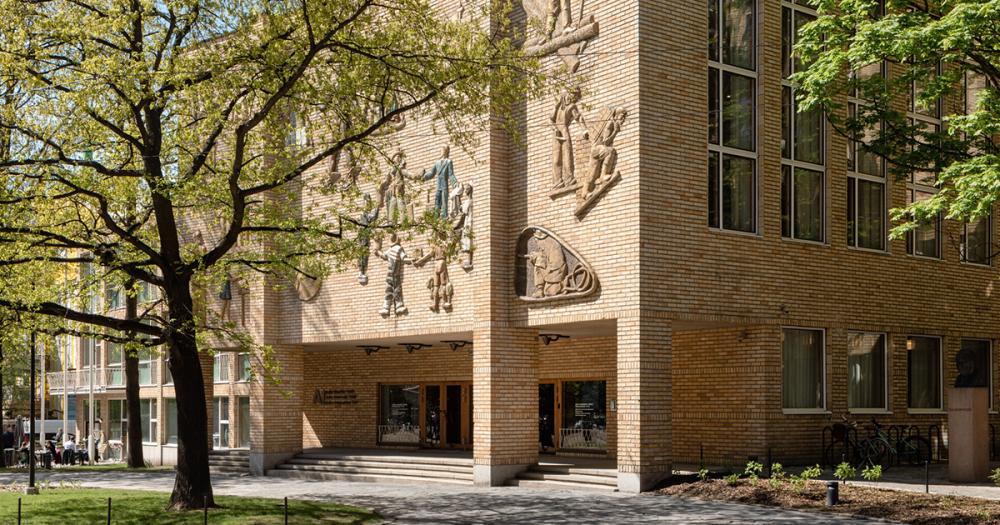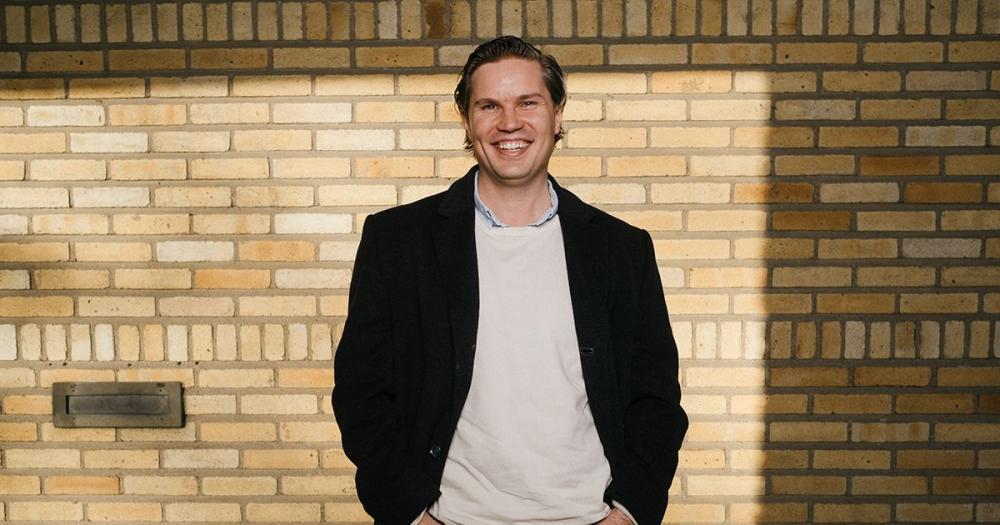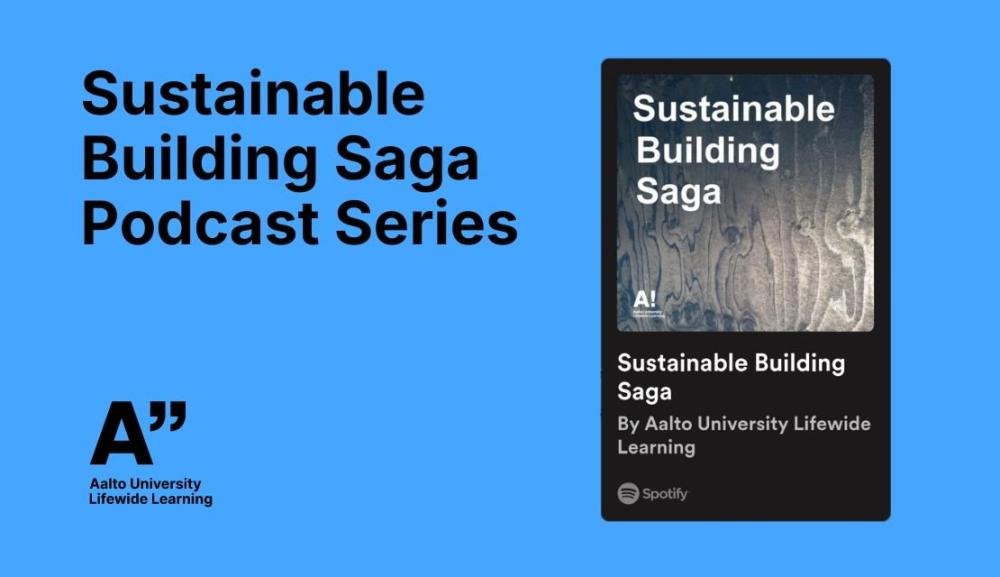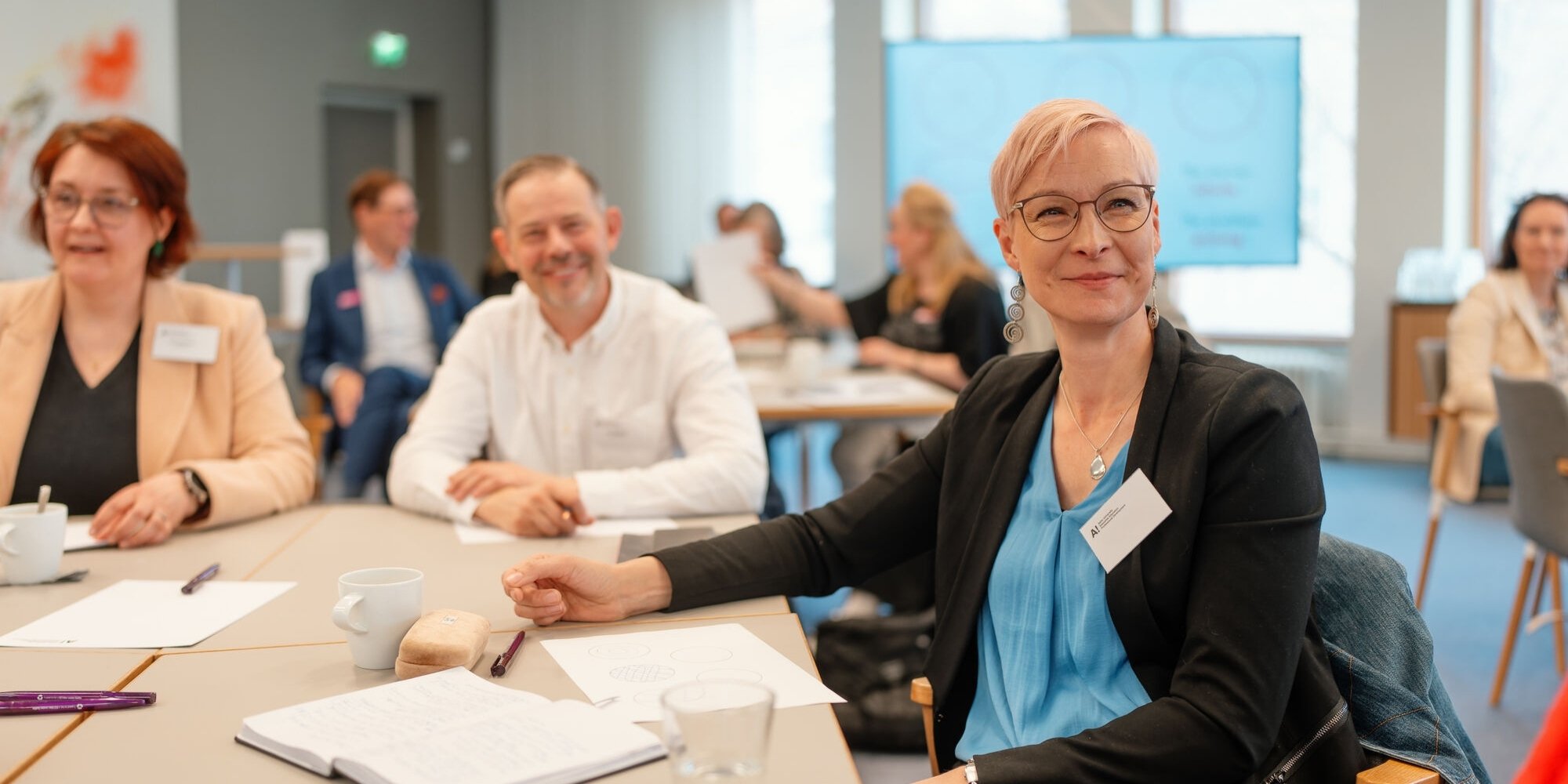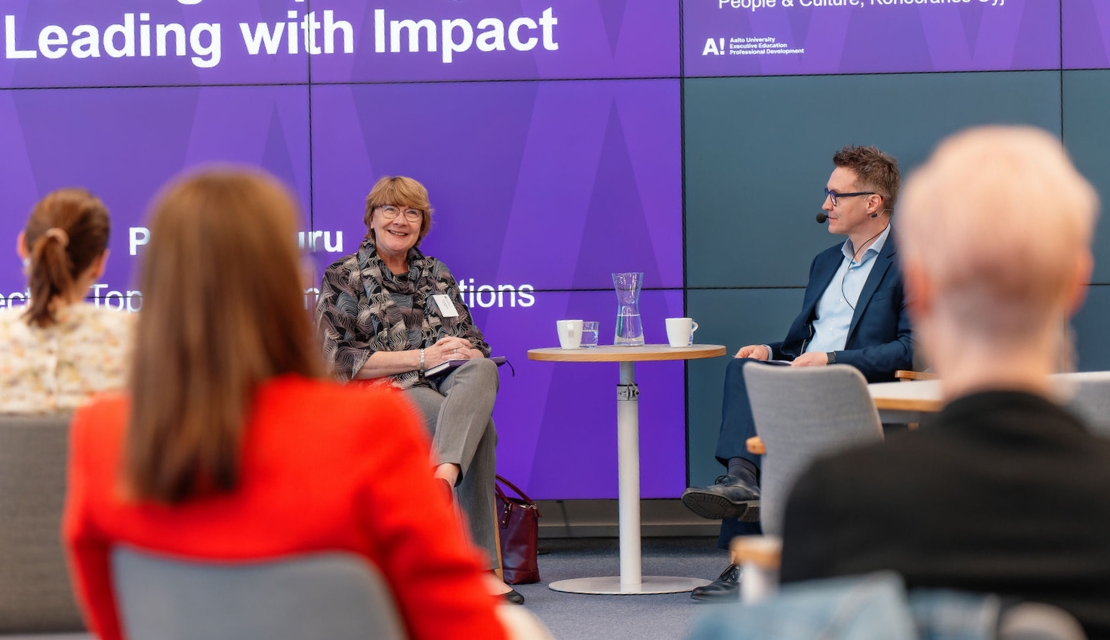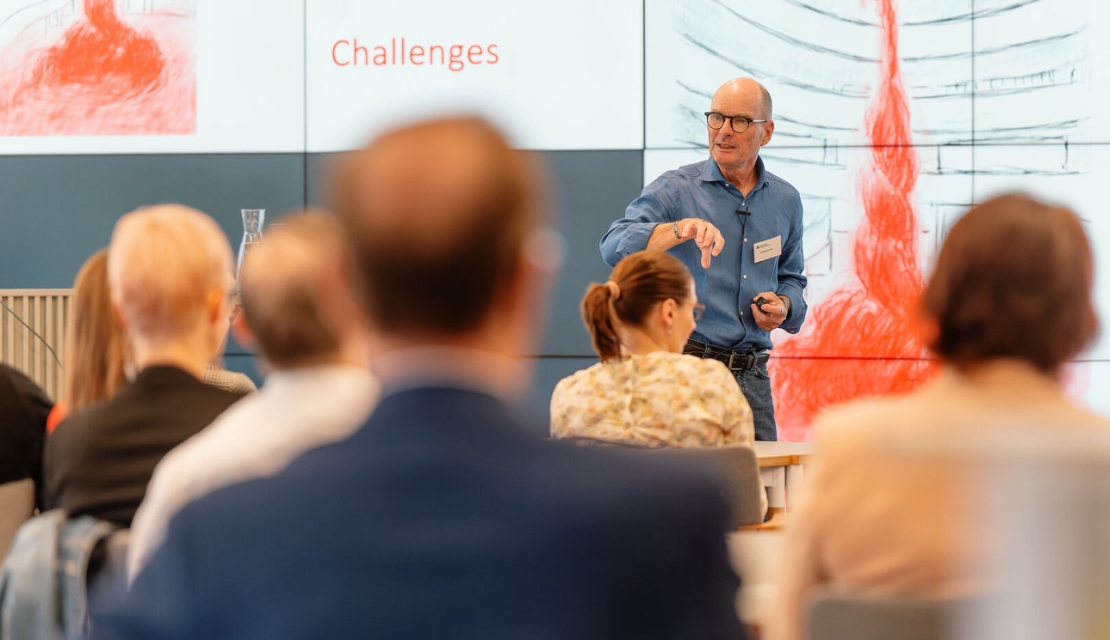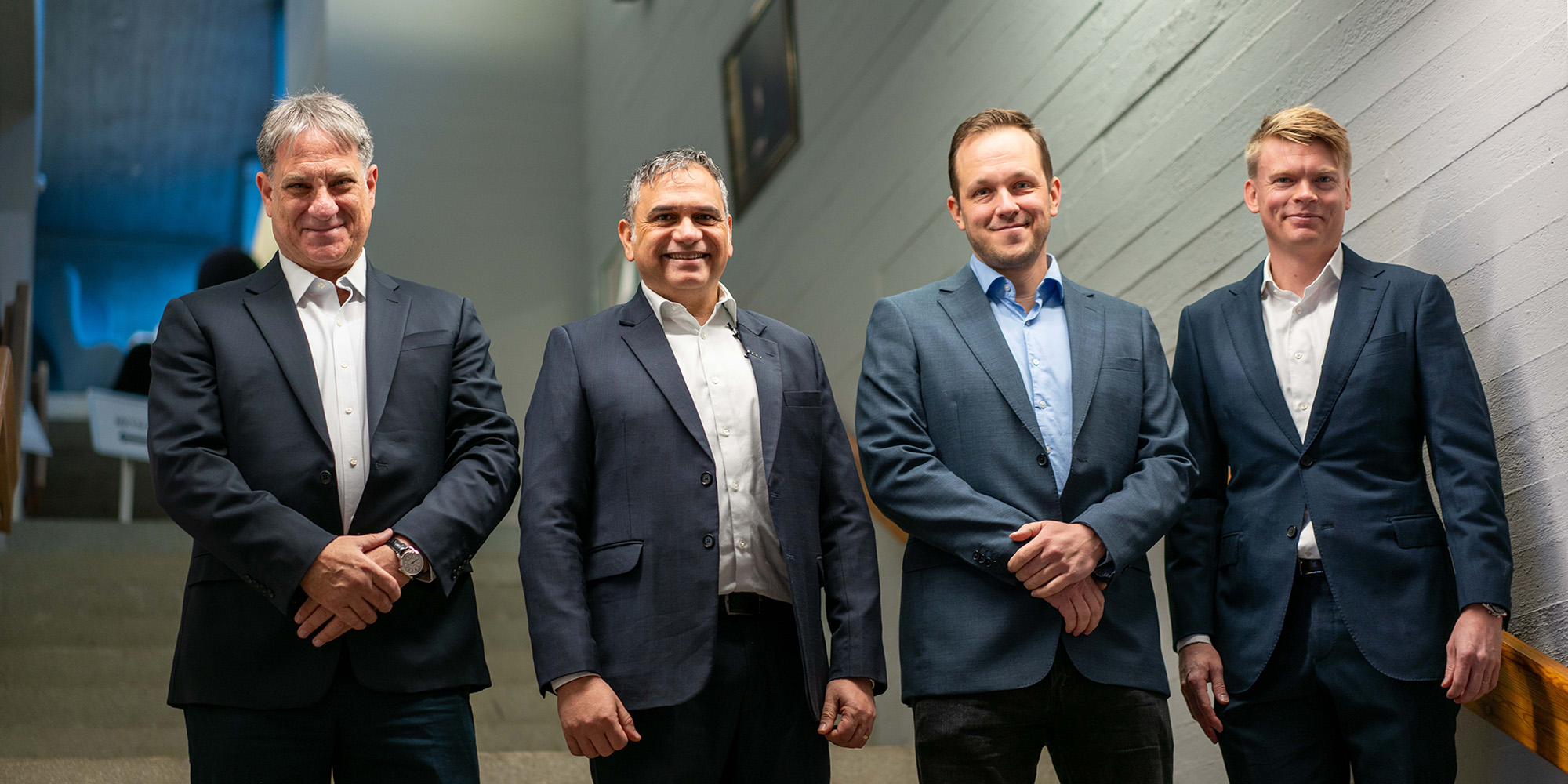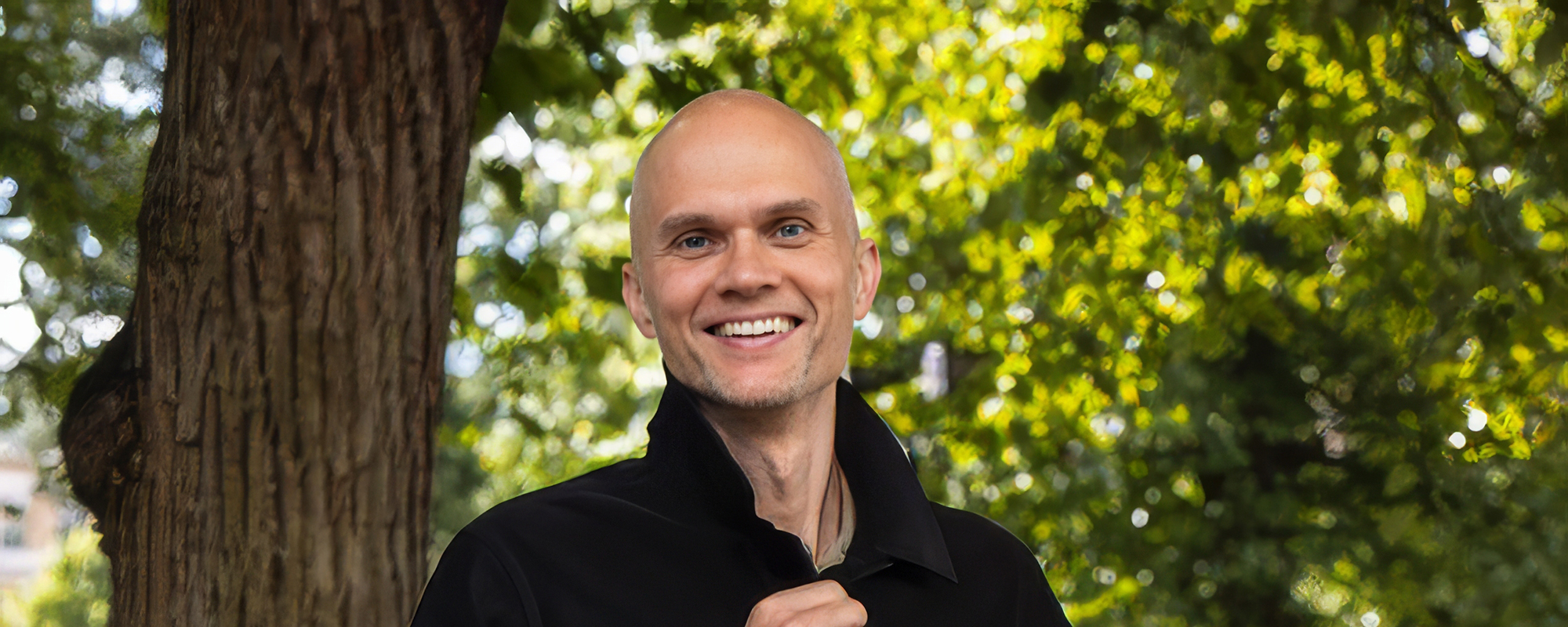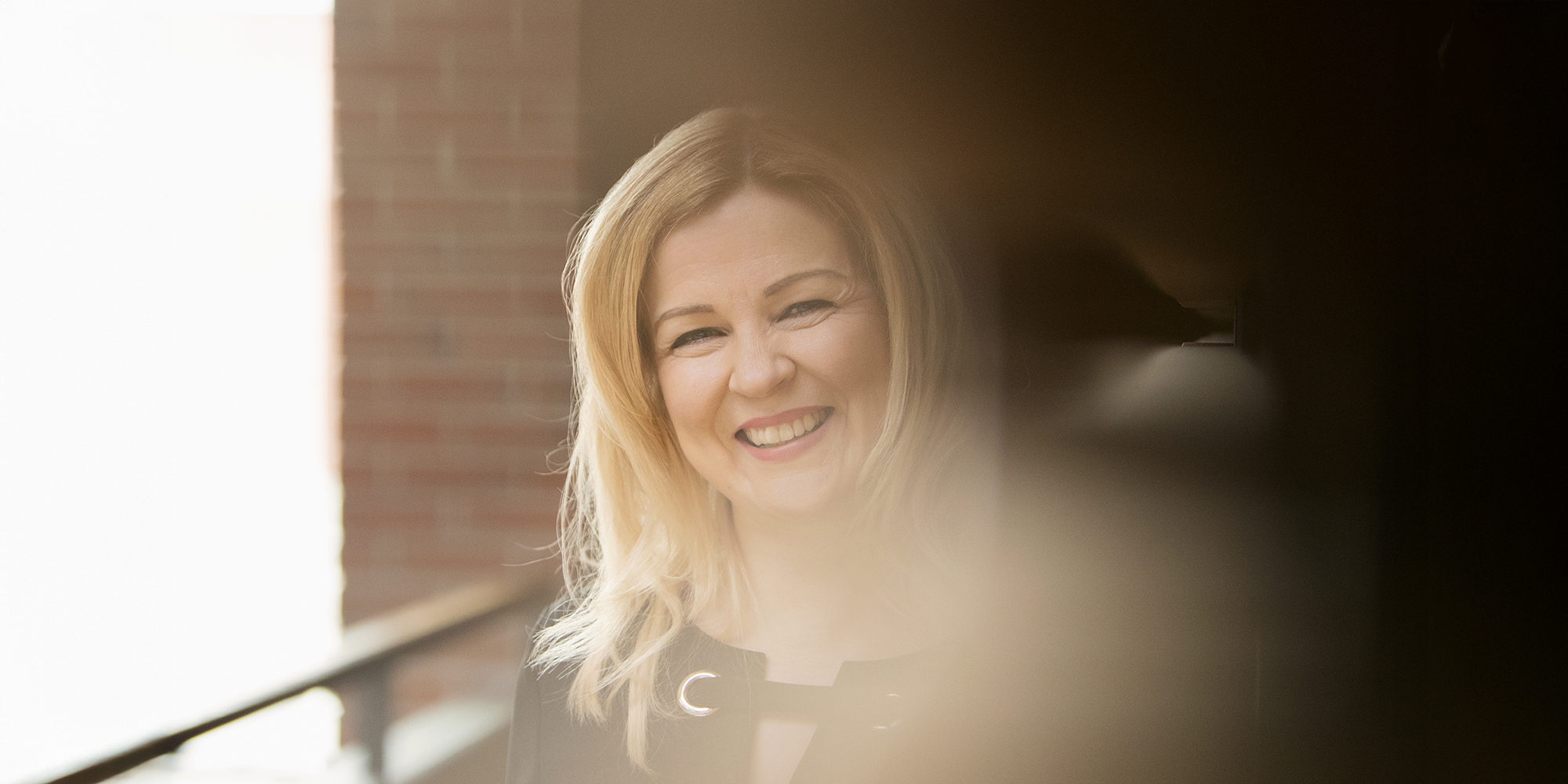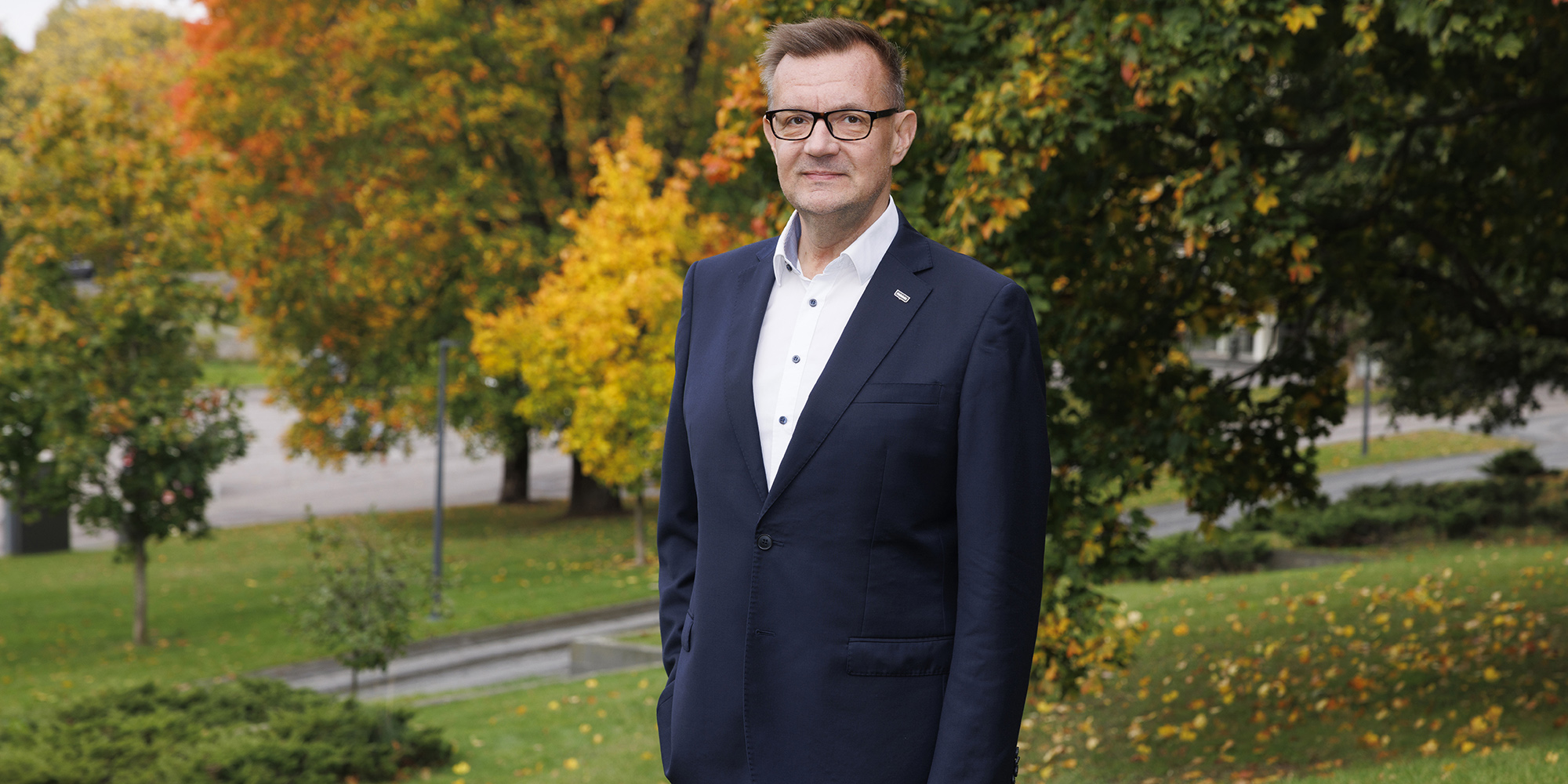Konecranes' Leader management development program has been implemented together with Aalto EE for ten years. The development of the program illustrates well how certain themes have remained the same despite the turmoil in the world, but the ways and methods of learning have become more diverse.
At a breakfast event at Aalto EE, Konecranes' Senior Vice President, Human Resources, Anneli Karkovirta, recalled how the COVID-19 pandemic revolutionized the traditional development program consisting of face-to-face modules.
During the pandemic, the program was moved entirely online. We were a little afraid of whether the solution would work, but we received the best feedback in the history of the program from the participants. After that, there was no going back," Karkovirta says.
Nowadays, the program includes live meetings at the beginning and end, as well as group work, projects, peer coaching, and the use of an AI coach in between the modules.
"We received the best feedback in the history of the program from the participants. After that, there was no going back."
Leading with Impact is a program for Konecranes' senior management, to which participants are invited.
"We have created a positive attitude towards self-development and the human side of leadership. The participants have been very committed to the program, and they also have an alumni network."
Self-management and team leadership are themes that will always remain topical, even though various change forces affect the operations of companies. Konecranes' program has also seen both unexpected crises and longer-term changes.
Of the change trends, sustainability is a theme for Konecranes that has been incorporated into the program. In other words, the training is carried out as sustainably as possible, for example, by reducing travelling, and not just studying the subject in theory.
|
|
| Anneli Karkovirta from Konecranes does not want to drive people out of their comfort zone. Instead, she wants to expand the comfort zone, create a safe space where you can learn and also fail. |
A Leader Must Tolerate Chaos
Trends also include the acceleration of the pace of change in the world and growing uncertainty. However, we should not be paralyzed when facing these changes.
"There has always been uncertainty, and leaders must take a natural approach to change: dare to act in uncertainty and tolerate chaoticness."
According to Karkovirta, the goal of leadership development at Konecranes is not so much to teach specific skills as to develop and maintain a culture of continuous learning.
"The culture of learning begins with the observation that learning never ends, but that all situations are learning opportunities. You also need to understand different ways of learning. 70-20-10 is an old concept, but I find it still very relevant," she says, referring to the observation that most of the learning occurs in connection with one's work.
"Leaders must take a natural approach to change: dare to act in uncertainty and tolerate chaoticness."
Karkovirta does not agree with all the clichés of leadership development. For example, she does not want to drive people out of their comfort zone.
"I want to expand the comfort zone, create a safe space where you can learn and also fail. You often learn the most from failures."
An example of Karkovirta's thinking is the role-playing game related to coaching, which many people find quite uncomfortable. That is why at Konecranes, the role-playing game features two actors who are instructed by the participants.
"Maybe next time, participants will feel confident enough to take on the roles themselves.”
Innovating Inside the Box
Karkovirta has noticed that ‘thinking out of the box’ is not the best method to promote innovation in an organization.
"Innovation requires that you build a box inside which you innovate. If you give people restrictions, they have to think harder. The challenge may be, for example, to halve electricity consumption or significantly reduce the area of the factory."
In the Leading with Impact training, one of the innovation coaches is Jörg Reckhenrich, who uses several Art Thinking methods to develop leaders' competencies. According to him, they can be used to develop self-awareness and trust, which helps to manage complex, uncertain situations.
"There is always a tension between innovation and control of the situation, as the top conductor Simon Rattle has described: If you don't decide enough, the performance will go into free fall. On the other hand, if you decide too much, the performance won't take off," Reckhenrich describes.
|
|
| Jörg Reckhenrich uses several Art Thinking methods to develop leaders' competencies. |
His methods include the exercise "think about something impossible". This idea, which was considered impossible, must then be implemented as a project of a couple of hours.
For Konecranes, space cranes and expansion to Mars were impossible ideas.
"They created the business unit and organization of the future for it in one and a half hours. This exercise produces amazing results. It develops the 'as you do' mentality, produces personal capability, and develops the interaction of roles."
In Reckhenrich's ‘museum exercise’, participants first formulate a topic or problem they want to address. Then they choose a piece of art from the art museum and start discussing what they see with either a coach or a peer.
"They don't talk about art, but about their own lives. Control, rationality, and rigid thinking are replaced by creativity, surprises, and new insights."
"Control, rationality, and rigid thinking are replaced by creativity, surprises, and new insights."
At the breakfast event, Patrick Furu, Director of Top Management Solutions at Aalto EE, and Reckhenrich demonstrated the method in front of Marjatta Tapiola's “Minotaurus ja kallo” (Minotaur and Skull).
Furu has a problem based on a real situation: he feels that the team is not using its full potential. How could they be taken to the next level and participate more actively?
Reckhenrich asks him to look at the painting and tell him what he sees. In the dramatic work, Furu finds a bull's skull, a lying human figure, and blood stains. He interprets that the team is now lying on the ground and bleeding, and there is fear and aggression in the air.
"The team's communication has progressed too straightforwardly and overwhelmingly, and people have not been listened to. Even when the exercise was so concise, it really helped to associate new perspectives," Furu described.

